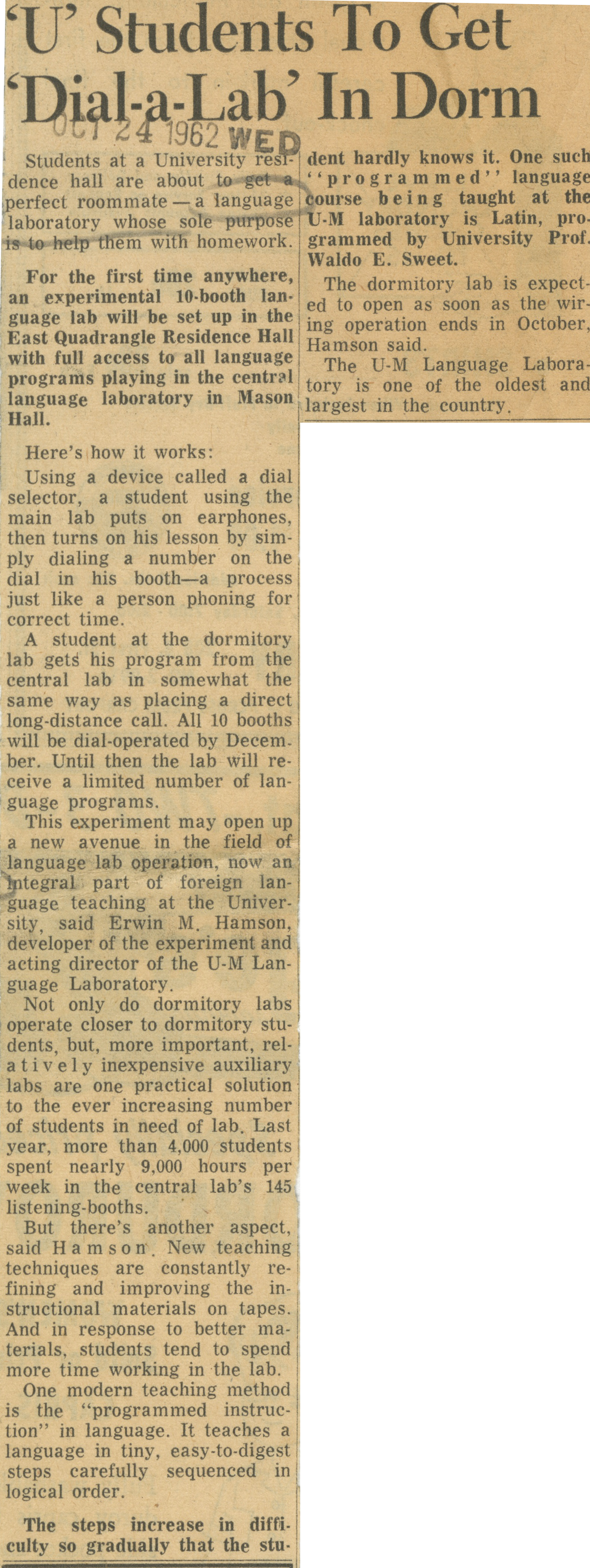'U' Students To Get 'Dial-a-Lab' In Dorm

‘U' Students To Get ‘Dial-a-Lab’ In Dorm
Students at a University residence hall are about to get a perfect roommate — a language laboratory whose sole purpose is to help them with homework.
For the first time anywhere, an experimental 10-booth language lab will be set up in the East Quadrangle Residence Hall with full access to all language programs playing in the central language laboratory in Mason Hall.
Here’s how it works:
Using a device called a dial selector, a student using the main lab puts on earphones, then turns on his lesson by simply dialing a number on the dial in his booth—a process just like a person phoning for correct time.
A student at the dormitory lab gets his program from the central lab in somewhat the same way as placing a direct long-distance call. All 10 booths will be dial-operated by December. Until then the lab will receive a limited number of language programs.
This experiment may open up a new avenue in the field of language lab operation, now an integral part of foreign language teaching at the University, said Erwin M. Hamson, developer of the experiment and acting director of the U-M Language Laboratory.
Not only do dormitory labs operate closer to dormitory students, but, more important, relatively inexpensive auxiliary labs are one practical solution to the ever increasing number of students in need of lab. Last year, more than 4,000 students spent nearly 9,000 hours per week in the central lab’s 145 listening-booths.
But there’s another aspect, said Hamson. New teaching techniques are constantly refining and improving the instructional materials on tapes. And in response to better materials, students tend to spend more time working in the lab.
One modern teaching method is the “programmed instruction” in language. It teaches a language in tiny, easy-to-digest steps carefully sequenced in logical order.
The steps increase in difficulty so gradually that the student hardly knows it. One such "programmed" language course being taught at the U-M laboratory is Latin, programmed by University Prof. Waldo E. Sweet.
The dormitory lab is expected to open as soon as the wiring operation ends in October, Hamson said.
The U-M Language Laboratory is one of the oldest and largest in the country.